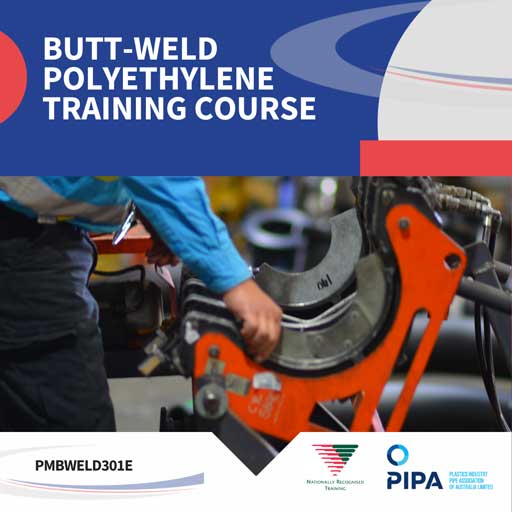Our Butt Weld course explores the methods, materials and applications of Butt Welding polyethylene pipes and fittings, materials and composition, applications and pressure ratings to using a variety of equipment- manual or automatic with varying methods. It is valid for industrial use both in the field and in factory conditions.
What is Butt Welding?
Butt Fusion stands as a prevalent technique for connecting HDPE Pipe. Butt welding is a welding technique used to join two pieces of plastic material together along a common edge in a linear fashion. The term “butt” in butt welding refers to the ends of the two pieces being butted together. This method is commonly employed in the welding of HDPE pipes.
In the context of HDPE pipe welding, for example, the process involves heating the two pipe ends using a welding machine, often to a molten or semi-molten state. Once heated, the two ends are pressed together with force, and the material cools and solidifies, creating a strong and durable weld. The key feature of butt welding is that it produces a continuous and smooth joint along the entire length of the welded seam.
Butt welding is widely used in various industries where a continuous and robust joint is essential, such as in the construction of pipelines, fabrication of structural components, and manufacturing of pressure vessels. The process requires careful control of temperature, pressure, and alignment to ensure a high-quality and reliable weld.
This process involves the utilisation of a Butt-Welding machine to securely grip, align, and heat the two pipe ends. Subsequently, these heated ends are hydraulically pressed together and held in position until the fusion is complete, seamlessly welding the two ends into a cohesive joint.




